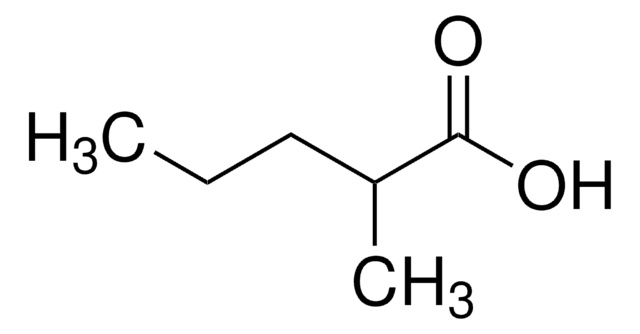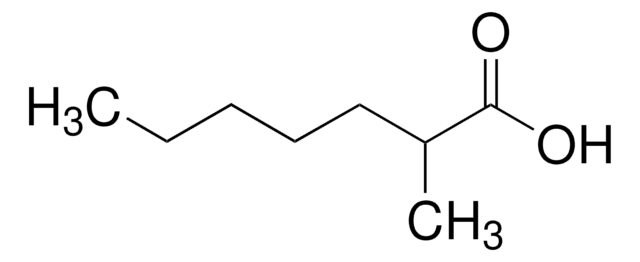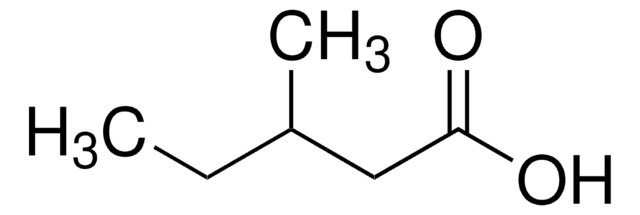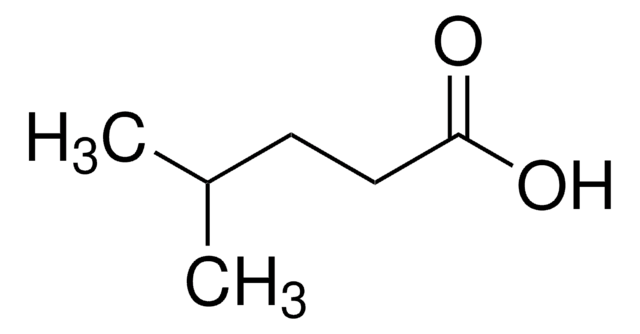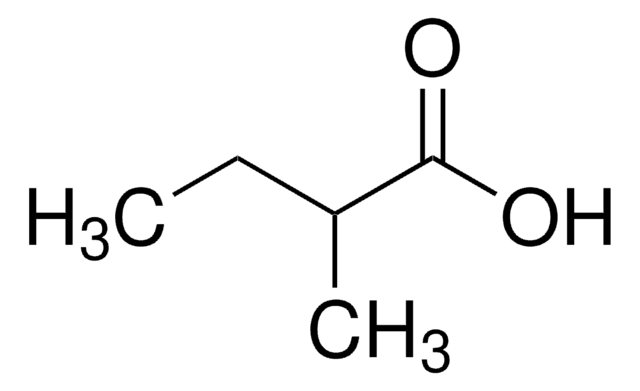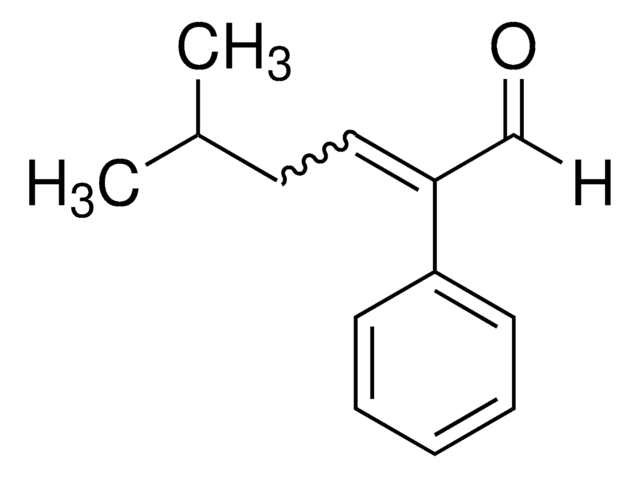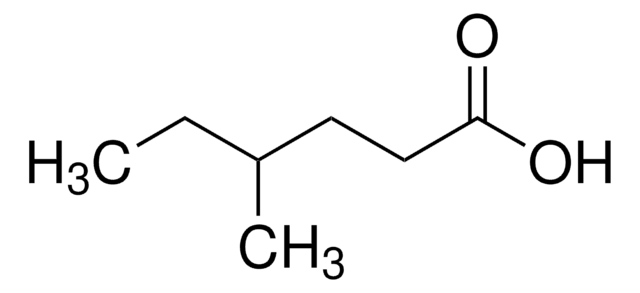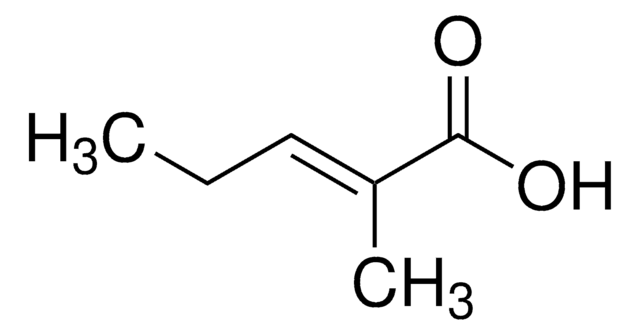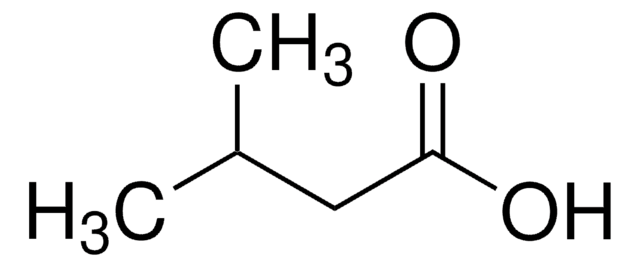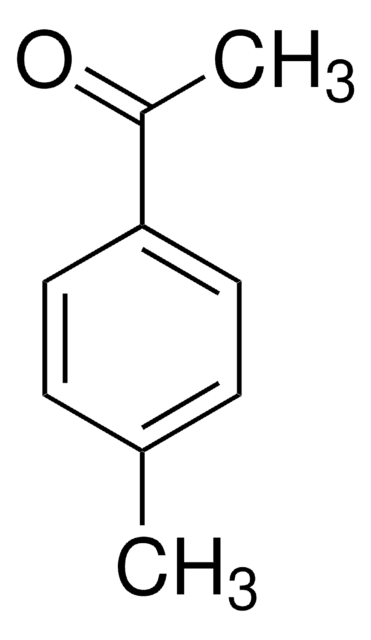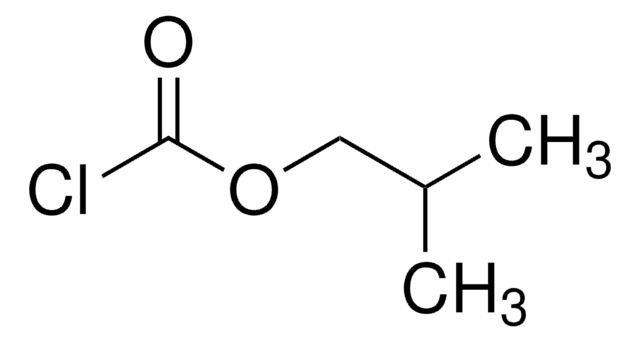Key Documents
Safety Information
W343706
3-Methylpentanoic acid
≥98%, FG
Synonym(s):
(±)-3-Methylvaleric acid
About This Item
Halal
Kosher
Recommended Products
biological source
synthetic
Quality Level
grade
FG
Halal
Kosher
Agency
meets purity specifications of JECFA
reg. compliance
EU Regulation 1334/2008 & 178/2002
Assay
≥98%
refractive index
n20/D 1.416 (lit.)
bp
196-198 °C (lit.)
density
0.93 g/mL at 25 °C (lit.)
application(s)
flavors and fragrances
Looking for similar products? Visit Product Comparison Guide
1 of 4
This Item | W346306 | W275409 | W255900 |
|---|---|---|---|
| grade FG, Kosher, Halal | grade FG, Fragrance grade, Halal, Kosher | grade FG, Halal, Kosher | grade FG, Fragrance grade, Halal, Kosher, natural |
| biological source synthetic | biological source synthetic | biological source synthetic | biological source - |
| food allergen no known allergens | food allergen no known allergens | food allergen no known allergens | food allergen no known allergens |
| agency meets purity specifications of JECFA | agency follows IFRA guidelines, meets purity specifications of JECFA | agency meets purity specifications of JECFA | agency follows IFRA guidelines, meets purity specifications of JECFA |
| assay ≥98% | assay ≥98% | assay ≥98% | assay ≥99% |
Application
- The olfactory coreceptor IR8a governs larval feces-mediated competition avoidance in a hawkmoth.: Discusses the ecological role of 3-Methylpentanoic acid in insect behavior, providing insights into its natural function in communication and survival strategies within ecosystems (Zhang et al., 2019).
Signal Word
Danger
Hazard Statements
Precautionary Statements
Hazard Classifications
Skin Corr. 1B
Storage Class Code
8A - Combustible corrosive hazardous materials
WGK
WGK 3
Flash Point(F)
185.0 °F - closed cup
Flash Point(C)
85 °C - closed cup
Personal Protective Equipment
Regulatory Listings
Regulatory Listings are mainly provided for chemical products. Only limited information can be provided here for non-chemical products. No entry means none of the components are listed. It is the user’s obligation to ensure the safe and legal use of the product.
FSL
Group 4: Flammable liquids
Type 3 petroleums
Hazardous rank III
Water insoluble liquid
JAN Code
W343706-BULK-K:
W343706-SAMPLE-K:
W343706-SAMPLE:
W343706-100G-K:4548173978017
W343706-1KG-K:4548173978024
W343706-VAR-K:
W343706-25G:
W343706-25G-K:4548173978031
W343706-1KG:
W343706-100G:
Choose from one of the most recent versions:
Already Own This Product?
Find documentation for the products that you have recently purchased in the Document Library.
Customers Also Viewed
Our team of scientists has experience in all areas of research including Life Science, Material Science, Chemical Synthesis, Chromatography, Analytical and many others.
Contact Technical Service